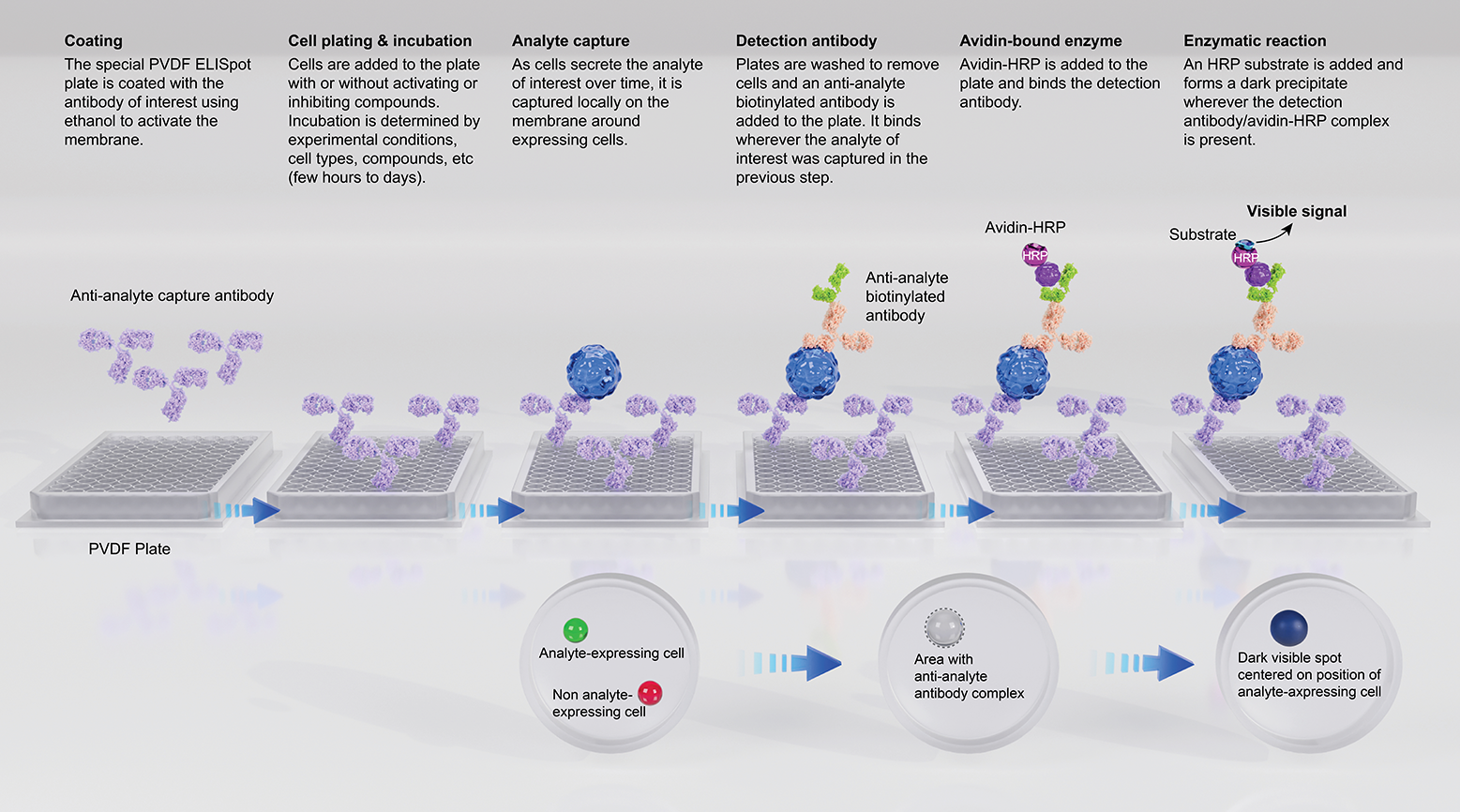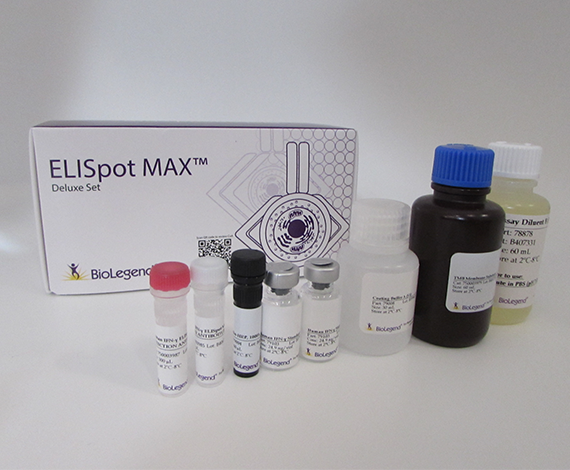What are ELISpot assays?
The Enzyme-Linked Immunospot (ELISpot) technique is an immunoassay that mirrors the ELISA technique to determine phenotypic information in cell populations, and identifies or counts cells based on the secretion of cytokines and other soluble analytes.
The principle of the assay relies on using plate-bound antibodies to capture locally-secreted analytes directly in the vicinity of the cells expressing them. The resulting complex is revealed using the ELISA approach, where an enzymatic reaction produces a visible precipitate marking the spots where the expressing cells are and earning the technique its name.
 Login / Register
Login / Register 








Follow Us